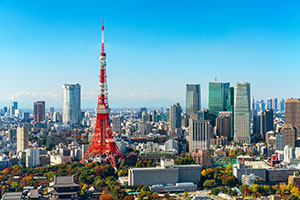13-Nights Best of South Korea & Japan

Goway Travel
FIRST-CLASS | PRIVATE-GUIDED: Discover the highlights of South Korea and Japan as you journey through culture, history, and nature. Start in bustling Seoul, then onto the historic temples of Gyeongju and the port city of Busan. Continue to Kyoto and some of Japan's most iconic gardens and temples. Understand the impact of Hiroshima before reveling in Japan's capital, Tokyo.Vacation Inclusions
- Private arrival airport transfer in Seoul
- 2 nights first-class accommodations in Seoul
- 2 nights first-class accommodations in Gyeongju
- 2 nights first-class accommodations in Busan
- Private-guided tours in Seoul, Andong, Gyeongju and Busan as per itinerary
- Private overland travel in South Korea as per itinerary by private A/C vehicle
- KTX Express Train Tickets (2nd class) for Seoul to Andong
- All applicable entrance fees as per itinerary
- Shared arrival and departure airport transfers in Japan
- 3 nights in first-class accommodations in Kyoto
- 1 night in first-class ryokan on Miyajima Island
- 3 nights in first-class accommodations in Tokyo
- Private-guided Kyoto highlights tour
- Private-guided Hiroshima highlights tour
- Private-guided Tokyo Edo tour
- Shared tour to Mt. Fuji and Hakone (max. 40 guests)
- 7 Day Ordinary Japan Rail Pass
- Breakfast daily (excluding day 1), 6 Lunches
Featured Destinations
| Tokyo | Destination Guide |
| Miyajima Island | Destination Guide |
| Pusan (Busan) | Destination Guide |
| Kyoto | Destination Guide |
| Gyeongju | Destination Guide |
| Seoul | Destination Guide |
Valid Date Ranges
Standard Terms & Conditions apply when purchasing this trip. Special savings cannot be combined with any other offer. Airfare available for better packaging and pricing. Ask your travel advisor for details. All prices are per person and quoted in U.S. dollars. Single supplement applies. Blackout dates/seasonal supplements may apply. Accommodations, inclusions and itinerary subject to change depending upon specific departure date. From pricing is based on lowest marketed price for this tour, rates vary by date of departure; please inquire for details for your preferred travel dates. Inquire for a list of exclusions. Departures: Most Tuesdays, Fridays and Sundays *private tours operate daily but the Mt. Fuji and Hakone tour operates on select dates.
All fares are quoted in US Dollars.





